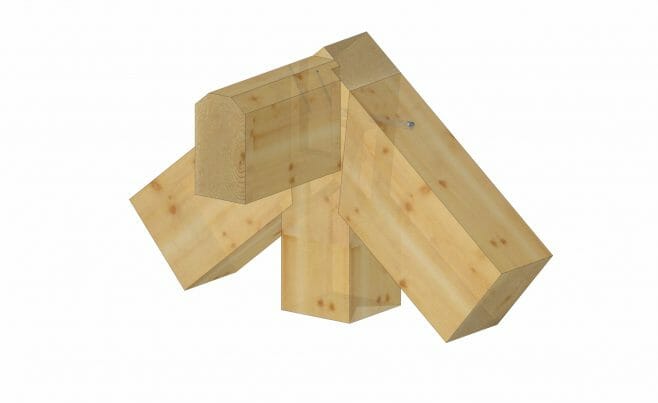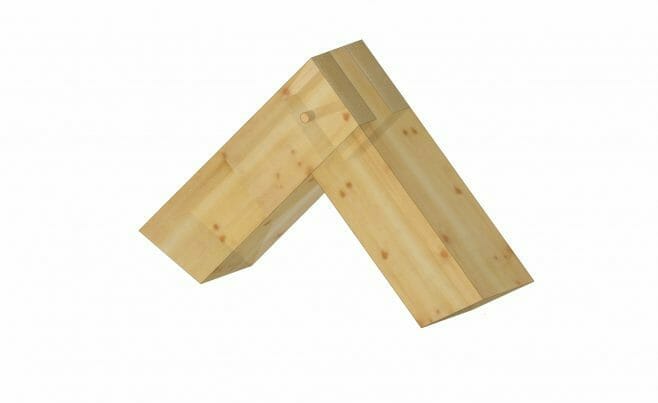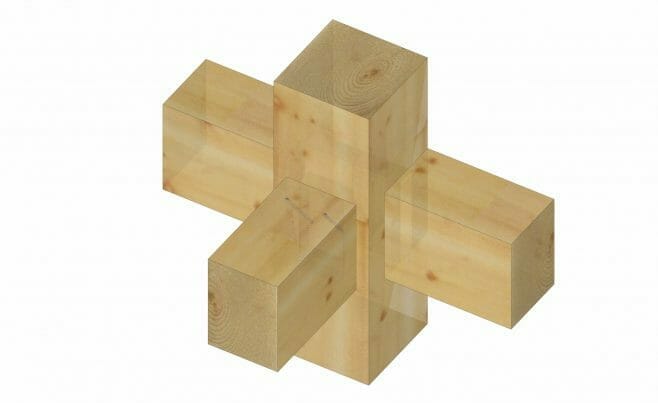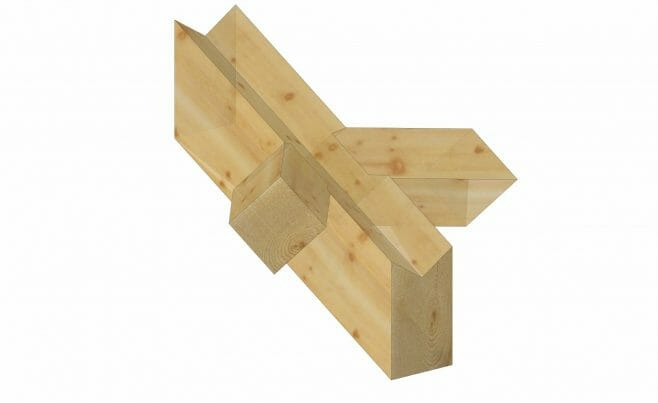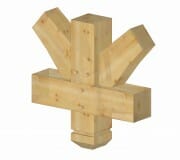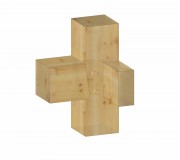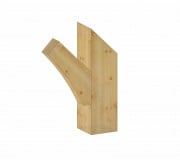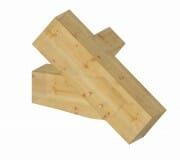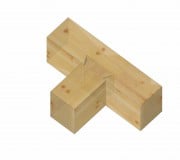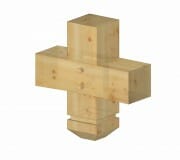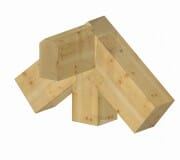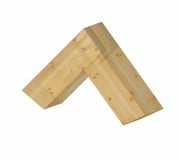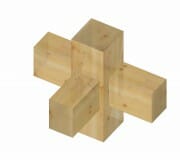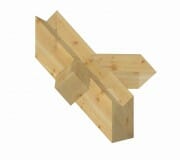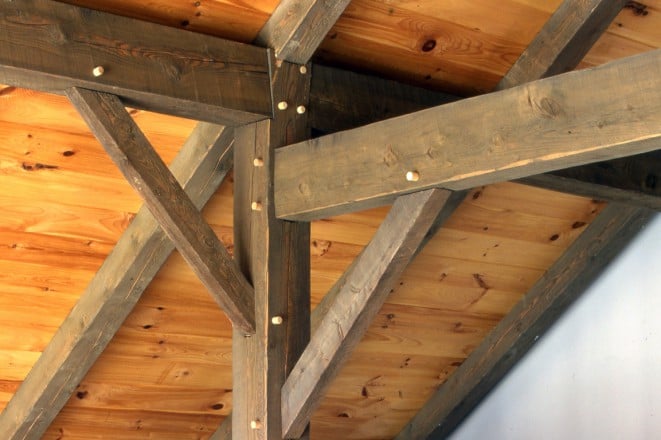
What is Traditional Timber Frame Joinery?
Traditional joinery is the classic way to connect timbers in post & beam and timber frame structures. It is an elegant and beautiful style of construction. Mortises and tenons are cut into the beams, which are secured together with hardwood pegs.
A joint is the area where two separate timber pieces connect. In timber framing, there are many different types of joints and connections. A frame can be completely constructed using traditional joinery, or a frame can be constructed using joints that are reinforced with steel plates and steel ties that are capable of carrying particularly heavy structural loads.
All of our joints are custom designed and engineered to fit the individual requirements of each of our projects.
Give us a call at 802-886-1917 or e-mail to learn how we can help with your post and beam project.
Have a Question?BROWSE THE TYPES OF TRADITIONAL JOINERY
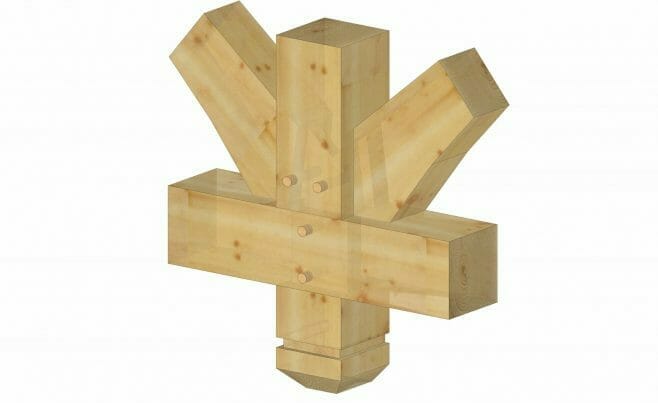
King Post With Webs & Finials
This is a classic connection used in king post trusses with added webs.
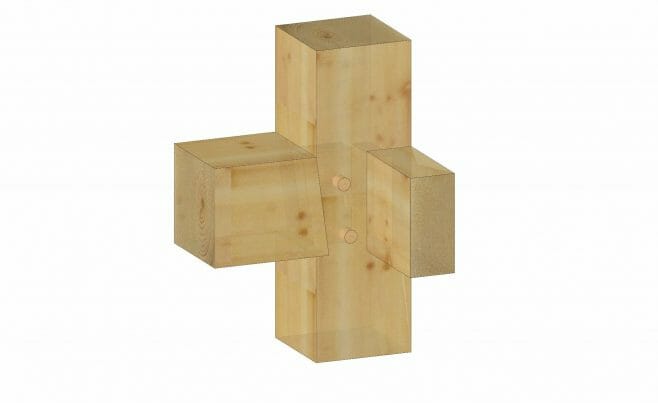
Shouldered Mortise & Tenon
This joint is the work horse of a timber frame. Girts, the main carrying beams, are shouldered one inch onto posts using a tapered cut. It is held with one inch birch pegs.
MORE ABOUT MORTISES & TENONS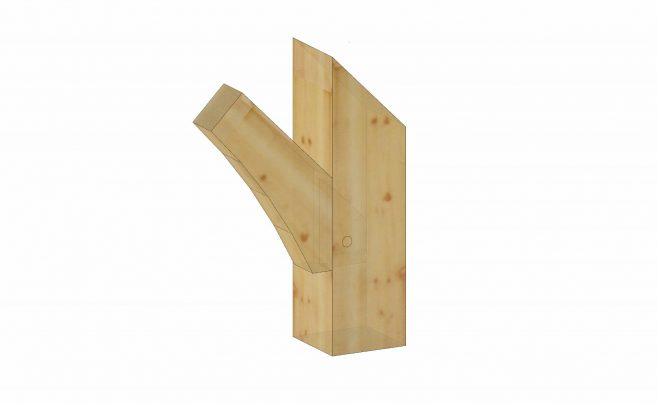
Brace Mortise & Tenon
Braces are connected using one or two inch wide tenons that are typically four inches deep. Occasionally, when a load requires it, the width or depth of the tenons are increased.
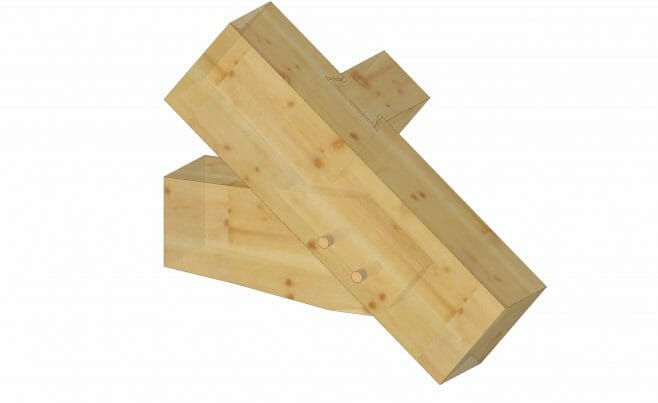
Collar Tie & Rafter
This image shows one way collar ties can be connected to rafters using traditional mortise and tenon cuts and hardwood pegs.
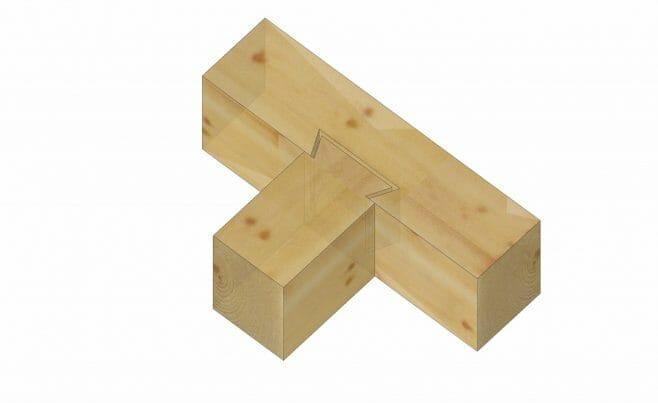
Dovetail
Dovetails are used to connect roof purlins and floor joists to rafters and girts. The geometry of the joint, plus hardwood wedges that are driven in, make the connection strong and tight.
MORE ABOUT DOVETAIL JOINTS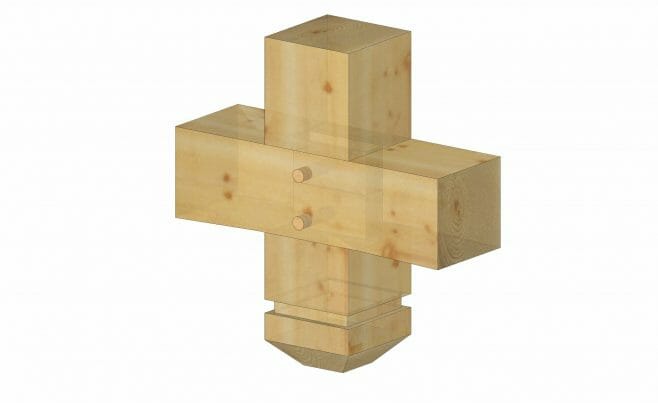
Finial
Finials are decorative elements used below king and queen posts. They can be simple, like the one shown above, or they can be round, tear drop shaped, acorn shaped or made with custom profiles.
Interactive PDFs
In order to gain an interactive 3D view of some of these joints and connections, download the required specialized applications below. Then click on the icons listed to view the interactive PDF.
